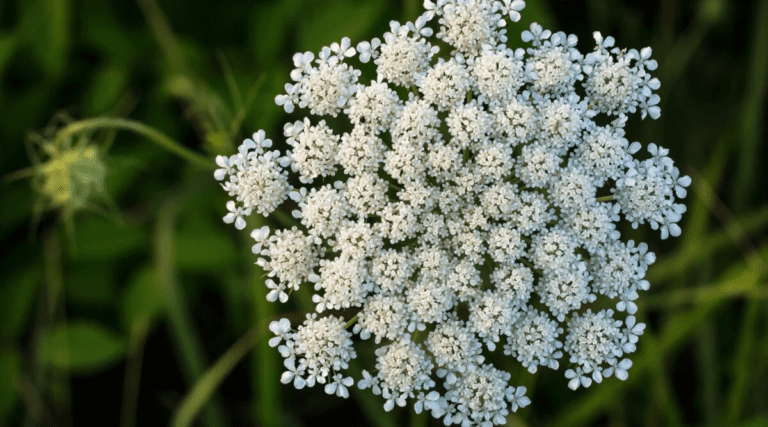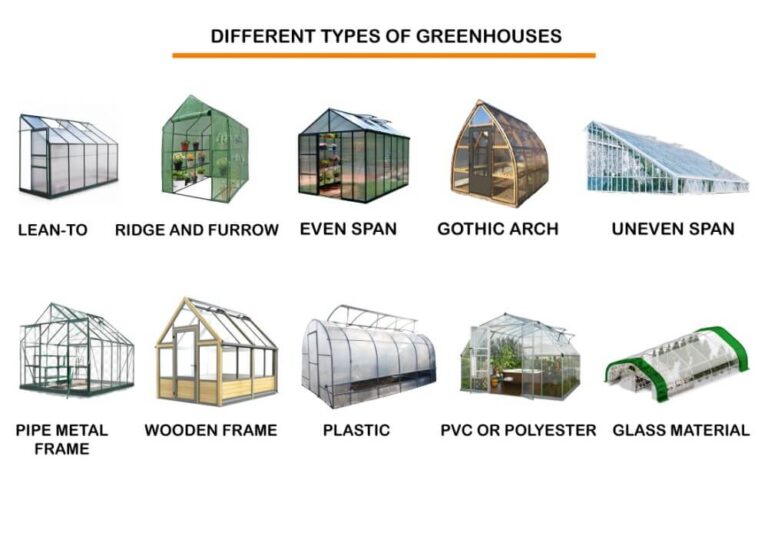How to Banish Tomato Hornworms: 5 Effective Ways to Handle and Halt These Caterpillars from Your Plants
Table of Contents
Understanding the Tomato Hornworm: Identifying the Culprit Devouring Your Plants
Tomato hornworms can wreak havoc on your precious garden plants, leaving behind a trail of destruction. These large, green caterpillars are known for their voracious appetite and can quickly strip your tomato plants of their leaves and fruit. But how do you know if it’s a tomato hornworm that’s causing all the damage?
Identifying the culprit behind your decimated plants is the first step in effectively dealing with the problem. Tomato hornworms, also known as Manduca quinquemaculata, are large caterpillars that can grow up to 4 inches long. They have a distinct green coloration, making it easy for them to blend in with the foliage of your tomato plants. One telltale sign of their presence is the chewed leaves and stems that they leave behind. If you notice large sections of your tomato plants missing or holes in the leaves, it’s likely that you have a tomato hornworm infestation. Additionally, these pests also leave behind dark green droppings, known as frass, which can be spotted on the leaves and surrounding soil.

The Lifecycle of Tomato Hornworms: Knowing When They Are Most Destructive
The tomato hornworm, scientifically known as Manduca quinquemaculata, undergoes a fascinating lifecycle that spans several weeks. Understanding this lifecycle is crucial for effectively managing these destructive pests in your garden. The adult moths, commonly referred to as sphinx moths, lay their eggs on the underside of tomato leaves during the warm summer months. These eggs are tiny, pale green in color, and difficult to spot with the naked eye.
After about a week, the eggs hatch into caterpillars, which are the notorious tomato hornworms. These caterpillars have a voracious appetite and are incredibly destructive to tomato plants. They have a characteristic green color, resembling the color of tomato foliage, making them blend in seamlessly and making their detection quite challenging. At first, they are only a few millimeters long, but they quickly grow, reaching impressive sizes of up to four inches in length. As they feed on the tomato leaves and stems, they grow rapidly, leaving behind their droppings, known as frass, which can be another telltale sign of their presence.
The Signs of Tomato Hornworm Infestation: Detecting the Presence of These Caterpillars
Tomato hornworm infestations can cause significant damage to your plants if not detected and addressed promptly. Recognizing the signs of an infestation is crucial in order to take swift action. One of the most noticeable signs of tomato hornworm presence is the defoliation of your plants. These voracious caterpillars can quickly strip the leaves of your tomato plants, leaving them bare and vulnerable. Keep an eye out for the sudden disappearance of foliage, especially in localized areas of your plant. Additionally, inspect your plants for the presence of dark green or black droppings, known as frass, which the hornworms leave behind as they feed. The frass may be found on the leaves, branches, or even on the ground near the affected plants. These visual cues can help you identify the presence of tomato hornworm infestation and take appropriate action.
Natural Predators: Encouraging Beneficial Insects to Control Tomato Hornworms
Natural predators play a crucial role in controlling tomato hornworm populations and minimizing plant damage. By encouraging beneficial insects in your garden, you can create a balanced ecosystem where these predators help keep the hornworms in check. Some of the most effective natural predators of tomato hornworms include parasitic wasps, ladybugs, lacewings, and predatory beetles.
Parasitic wasps, such as the braconid wasp and the trichogramma wasp, are particularly beneficial in controlling hornworm populations. These tiny wasps lay their eggs on the hornworms, and once the eggs hatch, the wasp larvae feed on the caterpillars, eventually killing them. Ladybugs, lacewings, and predatory beetles also feed on tomato hornworms, helping to reduce their numbers. By providing natural habitats and food sources for these beneficial insects, such as flowering plants and alternative prey, you can attract and sustain populations of these predators in your garden.
Encouraging natural predators is not only an effective method of tomato hornworm control but also a sustainable and environmentally-friendly approach. Unlike chemical pesticides, which can harm beneficial insects and disrupt the ecosystem, natural predators offer a natural and long-term solution. By supporting the presence of these beneficial insects in your garden, you can maintain a healthy balance and effectively manage tomato hornworm infestations.

Handpicking: An Effective Method for Removing Tomato Hornworms by Hand
Handpicking is a straightforward and effective method for removing tomato hornworms from your plants. This manual process allows you to physically eliminate the pests, preventing further damage to your precious tomato crop. By regularly inspecting your plants and identifying the hornworms, you can promptly take action and limit their impact.
To effectively handpick tomato hornworms, simply examine your plants closely, paying particular attention to the leaves and stems. These caterpillars are known for their vibrant green coloration, making them relatively easy to spot. Once you identify a hornworm, carefully pluck it from the plant, taking care not to damage the foliage or other beneficial insects. Dispose of the hornworm by either placing it in a bucket of soapy water or sealing it in a plastic bag. By consistently removing these pests, you can manage their populations and protect your tomatoes from further destruction.
Companion Planting: Using the Power of Natural Allies to Repel Tomato Hornworms
Companion planting is a time-honored technique that harnesses nature’s own forces to protect our plants from unwanted pests. When it comes to repelling tomato hornworms, some plants have proven to be powerful allies. By strategically placing specific companion plants near your tomatoes, you can create an environment that naturally deters these destructive caterpillars.
One such ally is the marigold. Not only do marigolds add a vibrant burst of color to your garden, but their distinct aroma acts as a natural repellent for tomato hornworms. The strong scent emitted by these flowers effectively confuses and repels the caterpillars, preventing them from feasting on your beloved tomatoes. Additionally, marigolds attract beneficial insects such as ladybugs and lacewings, which are natural predators of tomato hornworms. This double defense system makes marigolds an excellent choice for companion planting alongside your tomato plants.

Organic Sprays and Powders: Safe and Effective Solutions for Controlling Tomato Hornworms
Organic sprays and powders are a safe and effective solution for controlling tomato hornworms in your garden. These natural alternatives to chemical pesticides can help protect your plants while minimizing harm to beneficial insects and the environment.
One commonly used organic spray is Bacillus thuringiensis (Bt), a bacteria that specifically targets and kills tomato hornworms. When sprayed onto the foliage, Bt releases toxins that are ingested by the caterpillars, causing them to stop feeding and eventually die. Bt is considered safe for humans, pets, and other beneficial insects, making it an ideal choice for organic gardeners.
Another option is diatomaceous earth, a fine powder composed of the fossilized remains of marine organisms. When applied to tomato plants, diatomaceous earth creates a protective barrier that pierces the bodies of tomato hornworms, causing them to dehydrate and die. This natural powder is also non-toxic to humans and animals, making it a preferred choice for those seeking organic pest control methods.
By using organic sprays and powders, you can effectively control tomato hornworm infestations in your garden while maintaining the health of your plants and the surrounding ecosystem.
| Organic Control Methods | Description |
|---|---|
| Bacillus thuringiensis (Bt) | Organic spray targeting tomato hornworms. Bt releases toxins upon contact, causing caterpillars to stop feeding and die. Considered safe for humans, pets, and beneficial insects. |
| Diatomaceous Earth | Fine powder creating a protective barrier on tomato plants. Pierces the bodies of tomato hornworms, leading to dehydration and death. Non-toxic to humans and animals. |
| Organic Sprays and Powders | Safe and effective solutions for tomato hornworm control. Minimize harm to beneficial insects and the environment. |
| Safe for Humans and Pets | Both Bt and diatomaceous earth are considered safe for humans and pets, providing a non-toxic approach to pest control. |
| Environmentally Friendly | Organic sprays and powders contribute to environmentally friendly pest control, ensuring minimal impact on ecosystems. |
Utilizing these organic control methods not only effectively targets tomato hornworms but also aligns with environmentally conscious and safe pest control practices.
Neem Oil: How to Properly Apply this Natural Insecticide for Tomato Hornworm Control
Neem oil, derived from the seeds of the neem tree, is a natural insecticide that has shown promising results in controlling tomato hornworm infestations. To properly apply neem oil for tomato hornworm control, there are a few key steps to follow.
First, it’s important to choose the right time to apply neem oil. The best time is in the early morning or late evening when the weather is calm and temperatures are between 50°F and 90°F. Avoid applying the oil during extreme temperatures or when rain is expected within 24 hours.
Before applying the neem oil, make sure to shake the bottle well to ensure proper emulsification. Dilute the neem oil according to the manufacturer’s instructions, typically mixing one teaspoon of neem oil with one quart of water. Use a hand sprayer or a spray bottle to apply the diluted neem oil to the affected plants, covering both the upper and lower surfaces of the leaves.
When applying neem oil, it’s important to thoroughly coat the foliage of the plants. This helps ensure that the neem oil makes direct contact with the tomato hornworms and their eggs. Pay special attention to the areas where hornworms are commonly found, such as the stems, leaves, and flowers of the plants.
It’s worth noting that neem oil is a broad-spectrum insecticide, meaning it can harm beneficial insects as well. To minimize the impact on beneficial insects like bees and butterflies, avoid applying neem oil to blooming plants and be careful not to spray it directly on these beneficial insects.
While neem oil can be an effective tool in controlling tomato hornworms, it’s important to remember that it is not a silver bullet solution. Integrated pest management practices, such as handpicking and attracting natural predators, should be employed alongside neem oil treatments to achieve the best results.
Biological Control: Utilizing Bacteria to Combat Tomato Hornworm Infestations
Biological control offers an effective and environmentally-friendly method for combating tomato hornworm infestations. One such approach involves utilizing bacteria that naturally occur in the environment to target and control these pests. These bacteria, specifically those from the Bacillus genus, produce toxins that are harmful to tomato hornworms.
The most commonly used bacteria for biological control of tomato hornworms is Bacillus thuringiensis var. kurstaki (Btk). This particular strain of bacteria produces a toxin that is toxic to many types of caterpillars, including tomato hornworms. When the caterpillars ingest the toxin, it disrupts their gut function, leading to paralysis, starvation, and ultimately death.
| Aspect | Description |
|---|---|
| Biological Control Method | Utilizing bacteria as a natural solution to combat tomato hornworm infestations. |
| Bacterial Agent: Bacillus thuringiensis (Bt) | Bt is a commonly used bacterial agent in biological control. It releases toxins upon contact, disrupting the digestive system of tomato hornworms. |
| Mode of Action | Bt’s toxins cause caterpillars to stop feeding, leading to their eventual death. This bacterial control method is specific to certain pests, minimizing harm to beneficial insects and the environment. |
| Safety for Humans and Pets | Bt is considered safe for humans, pets, and other beneficial insects, making it a preferred choice for biological pest control. |
| Environmentally Friendly | Utilizing bacteria aligns with environmentally friendly pest control practices, as it specifically targets the pest without harming other organisms or ecosystems. |
Biological control through the use of bacteria, particularly Bacillus thuringiensis (Bt), offers an effective and environmentally conscious approach to combat tomato hornworm infestations.
Physical Barriers: Preventing Tomato Hornworms from Accessing Your Plants
One effective method for preventing tomato hornworms from accessing your plants is the use of physical barriers. By implementing these barriers, you can create a protective shield that prevents these destructive pests from reaching your valuable tomato plants.
One popular option is the use of floating row covers, which are made from lightweight materials such as spunbonded polypropylene. These covers act as a physical barrier that physically keeps the tomato hornworms away from your plants. The covers can be draped over the plants and secured with stakes or clips to create a tight seal. Not only do these covers prevent the hornworms from reaching your plants, but they also provide additional benefits by creating a microclimate that helps to retain moisture and protect against inclement weather. Additionally, the covers allow sunlight, air, and water to reach the plants, ensuring optimal growth and development.

Crop Rotation: Breaking the Tomato Hornworm Cycle and Protecting Future Plants
Crop rotation is a fundamental practice in agriculture that helps break the cycle of pest infestations and ensures the long-term health and productivity of plants. By rotating crops, gardeners can disrupt the habitat and feeding patterns of pests, such as the notorious tomato hornworm. This technique involves planting different plant families in different areas of the garden each year, thereby preventing the buildup of pests and diseases specific to a particular crop.
For effective control of tomato hornworms, it is crucial to rotate crops regularly. By changing the location of tomatoes and other susceptible plants, you can disrupt the life cycle of these pests. Tomato hornworms pupate in the soil during the winter months, emerging as moths in the following spring. By moving your tomatoes to a different location, you can prevent adult moths from finding suitable host plants for egg-laying. This breaks the cycle and reduces the likelihood of future infestations. Crop rotation not only protects current plants but also sets the stage for healthy and productive gardens in the years to come.
Maintaining Plant Health: Creating Conditions That Discourage Tomato Hornworms
Creating conditions that discourage tomato hornworms is key to maintaining the health of your plants and minimizing infestations. A healthy plant is more likely to withstand attacks from pests, including the tomato hornworm. Providing optimal growing conditions for your plants will not only make them less attractive to these pests but also promote overall plant vigor and resilience.
One important aspect of maintaining plant health is ensuring proper soil fertility. Tomato plants require well-balanced soil with adequate levels of nutrients, especially nitrogen. Nitrogen deficiency can weaken plants and make them more susceptible to pest infestations. Conduct regular soil tests to assess nutrient levels and adjust fertilizer applications accordingly. Additionally, incorporating organic matter into the soil can improve its structure, enhance water retention, and promote beneficial microbial activity, contributing to a healthy growing environment for your plants.
Another factor to consider is proper watering practices. Overwatering can create excessively moist conditions that favor the development of fungal diseases and attract pests like tomato hornworms. On the other hand, underwatering can stress plants and make them more vulnerable to pest attacks. Find the right balance by providing consistent and adequate moisture levels, allowing the soil to dry out slightly between watering sessions. Mulching around the plants can help retain moisture and regulate soil temperature, further supporting plant health.
Maintaining plant health also involves regular monitoring for early signs of pest presence. Regular inspections of your plants can help you detect tomato hornworms before they become a full-blown infestation. Look for chewed leaves, presence of dark green or black droppings, and the sight of the hornworm caterpillars themselves. Promptly removing any caterpillars you find by handpicking is an effective natural control method. By proactively ensuring optimal growing conditions and regularly inspecting your plants, you can discourage tomato hornworms and promote the health and productivity of your garden.
Monitoring and Early Intervention: Tips for Regularly Inspecting Your Plants and Taking Swift Action against
Regular monitoring and early intervention are crucial for ensuring the health and vitality of your plants and safeguarding them against the destructive tomato hornworms. By regularly inspecting your plants, you can promptly identify any signs of infestation and take swift action against these voracious caterpillars. Here are some tips to help you in this process.
First and foremost, make it a habit to closely examine your tomato plants at least once a week, paying particular attention to the foliage, stems, and fruit. Look for the telltale signs of hornworm presence, such as chewed leaves, defoliation, and dark green or black droppings. Remember that these pests can quickly blend in with the foliage, so a thorough inspection is crucial.
Additionally, consider using a flashlight to inspect your plants during nighttime, as tomato hornworms are nocturnal creatures and are more active then. This can help you catch them in action and prevent significant damage. While inspecting, check the undersides of leaves and along the stems, as hornworms often hide in these areas.
By proactively monitoring your plants and staying vigilant for any signs of tomato hornworm infestation, you will be able to take swift action and protect your plants effectively. Remember, early intervention is key to minimizing damage and preserving the health of your tomato plants.
How can I identify a tomato hornworm infestation?
Tomato hornworms can be identified by their large size, green color, and the presence of white stripes on their bodies. They also leave behind dark green droppings on the leaves of the plants they feed on.
Are there any natural predators that can help control tomato hornworms?
Yes, there are several beneficial insects that feed on tomato hornworms, such as parasitic wasps, ladybugs, and green lacewings. You can encourage these predators to your garden by providing a diverse habitat and avoiding the use of harmful pesticides.
Is handpicking an effective method to remove tomato hornworms?
Yes, handpicking is an effective and environmentally friendly method to remove tomato hornworms. Simply pick them off the plants and dispose of them in a bucket of soapy water.
Can companion planting help repel tomato hornworms?
Yes, certain companion plants, such as marigolds, basil, or borage, can help repel tomato hornworms. These plants emit strong scents that deter the caterpillars from feeding on your tomatoes.
Are there safe and effective organic sprays or powders to control tomato hornworms?
Yes, there are organic sprays and powders available, such as insecticidal soap or Bacillus thuringiensis (Bt), that can effectively control tomato hornworms without harming beneficial insects or the environment.
How should I properly apply neem oil to control tomato hornworms?
To properly apply neem oil, dilute it according to the instructions on the package and spray it evenly on the foliage of your plants, covering both the upper and lower surfaces of the leaves.
How does biological control using bacteria work against tomato hornworms?
Biological control involves using bacteria, specifically Bacillus thuringiensis (Bt), which produces toxins that are ingested by the tomato hornworms. These toxins cause the caterpillars to stop feeding and eventually die.
What physical barriers can I use to prevent tomato hornworms from accessing my plants?
You can use floating row covers or netting to create a physical barrier that prevents tomato hornworms from reaching your plants. Ensure that the covers are securely fastened and sealed to prevent any gaps.
How can crop rotation help in breaking the tomato hornworm cycle?
Crop rotation involves planting different crops in different areas of your garden each year. By rotating your crops, you disrupt the life cycle of tomato hornworms, making it harder for them to find their preferred host plants.
Are there any specific conditions I can create to discourage tomato hornworms from infesting my plants?
Yes, you can maintain plant health and discourage tomato hornworms by providing adequate sunlight, watering consistently, avoiding over-fertilization, and maintaining proper spacing between plants to improve air circulation.
How often should I inspect my plants for tomato hornworms and take action?
It is recommended to regularly inspect your plants at least once a week for signs of tomato hornworms. If you detect any infestation, take swift action to control and remove the caterpillars before they cause significant damage.

Beck Wakeford is a dedicated writer at SouthElMonteHydroponics, with a fervent enthusiasm for agriculture and technological innovation. Armed with a degree in Agricultural Engineering from a leading university, Beck specializes in hydroponic systems design, automation, and optimization. Their passion for merging traditional farming with cutting-edge technology drives them to explore novel solutions for sustainable food production. Beck’s expertise and keen interest in the intersection of engineering and agriculture make them a valuable asset in the quest for efficient and eco-friendly farming practices. Through their writing, Beck aims to inspire others to embrace the potential of hydroponics in shaping a more sustainable future.







